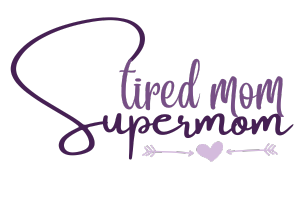Defining Unconditioned Stimulus In Classical Conditioning
The Unconditioned Stimulus is also known as unconditioned response. These terms refer to specific stimuli in the process of classical conditioning. The unconditioned stimulus (UCS) is a neutral stimulus that does not naturally trigger an instinctive response in the organism being conditioned. A conditioned stimulus (CS) is paired with an unconditioned stimulus, and this pairing triggers a conditioned response (CR). When you understand how each of these stimuli functions in the conditioning process, you can use them more effectively for behavior modification as well as other types of conditioning experiments. Read on to learn more about what your textbook could have left you wondering about regarding Unconditioned Stimulus In Classical Conditioning .
This post may contain affiliate links. Full privacy policy and disclosure here.
What Is An Unconditioned Stimulus?
An unconditioned stimulus (UCS) is a stimulus that naturally and automatically triggers a specific response. The unconditioned stimulus is frequently paired with a neutral stimulus (NS) to create a conditioned stimulus (CS). The unconditioned response (UR) is the specific response that the stimulus automatically triggers. If we create a conditioned response (CR) in a person who has not previously been exposed to the stimulus, then the stimulus has been conditioned. If the person has previous experience with the stimulus, then it is called a conditioned response. The automatic response triggered by the stimulus is called the unconditioned response. The stimulus, when paired with a neutral stimulus, becomes a conditioned stimulus. When the conditioned stimulus is presented without the neutral stimulus, the conditioned response occurs. The neutral stimulus is often a mild electric shock. In a typical experiment, the researcher will administer a mild electric shock while the subject is exposed to the stimulus. After several pairings, the stimulus alone will elicit the same response as when the electric shock was administered. The conditioned response is called a conditioned response because it was elicited by a conditioned stimulus.
How Does An Unconditioned Stimulus Function In Classical Conditioning?
The unconditioned stimulus functions as the reminder of the natural or instinctive response. The CS will be paired with an UCS so that the CS can trigger the same response. The organism being conditioned (person, animal, etc.) will then show the conditioned response rather than the natural response. The NS is used to create a CS that triggers the same response as the UCS. The UCS and CS are paired together when the UCS is presented immediately before the CS. The pairing is then repeated several times. After these pairings, the CS alone elicits the same response as when the UCS was present. The CS has then been conditioned to trigger the response.
Defining Conditioned Stimulus In Classical Conditioning
The conditioned stimulus is associated with an unconditioned stimulus so that the conditioned stimulus will automatically trigger the same response as the unconditioned stimulus. The UCS is used to create a CS that triggers the same response as the UCS. The UCS and CS are paired together so that the CS will automatically trigger the same response as the UCS. The pairing is repeated several times. After these pairings, the CS alone elicits the same response as when the UCS was present. The CS has then been conditioned to trigger the response.
How Does A Conditioned Stimulus Function In Classical Conditioning?
The conditioned stimulus functions as the reminder of the stimulus that has been paired with the unconditioned stimulus. The UCS is used to create a CS that triggers the same response as the UCS. The UCS and CS are paired together when the CS is presented immediately before the UCS. The pairing is repeated several times. After these pairings, the CS alone elicits the same response as when the UCS was present. The CS has then been conditioned to trigger the response.
When Are UCS And CS Used Together?
The UCS is used alone as the reminder of the natural response. The CS is used alone as the reminder of the stimulus that has been paired with the UCS. The UCS and CS are used together as the means of conditioning the CS to trigger the same response as the UCS. The pairing is repeated several times. After these pairings, the CS alone elicits the same response as when the UCS was present. The CS has then been conditioned to trigger the response.
Summing Up
There are various terms that are associated with the process of classical conditioning. An unconditioned stimulus is a stimulus that naturally and automatically triggers a specific response. A conditioned stimulus is associated with and associates with an unconditioned stimulus so that the conditioned stimulus will trigger the same response. The unconditioned stimulus is used to create a conditioned stimulus that triggers the same response as the unconditioned stimulus.
References
- Nature of Unconditioned Stimulus and Response: The UCS typically is a biologically potent stimulus like food, which naturally produces an UR such as salivation. In the case of anxiety disorders like PTSD, a traumatic event can serve as an UCS, triggering conditioned fear responses long after the danger has passed (Zhao, Fatema, Zhao, & Nan, 2016).
- Formation of Conditioned Stimuli: Through classical conditioning, a neutral stimulus (NS) becomes a conditioned stimulus (CS) when paired with an UCS. This pairing causes the NS to elicit a conditioned response (CR), similar to the UR triggered by the UCS (Akpan, 2020).
- Role in Learning and Memory: Studies show that the UCS plays a critical role in associative learning processes. For example, in pain modulation, the presence of a conditioned non-nociceptive sensory stimulus, previously paired with a painful stimulus, can modify pain threshold ratings in humans (Traxler, Madden, Moseley, & Vlaeyen, 2019).
- Impact on Fear and Anxiety: Research indicates that understanding the UCS and its association with the CS is crucial in fear conditioning. This knowledge is particularly relevant in clinical settings, such as treating phobias and anxiety disorders, where a phobia-relevant UCS can trigger exaggerated responses in the fear network of the brain (Schweckendiek et al., 2011).
- Experimentation and Observations: Various experimental setups have been used to study the effects of UCS in classical conditioning. These include the use of odors as a CS paired with an aversive stimulus like bright light in earthworms, demonstrating classical conditioning of an odor (Reyes-Jiménez, Abad, & Paredes-Olay, 2019).







